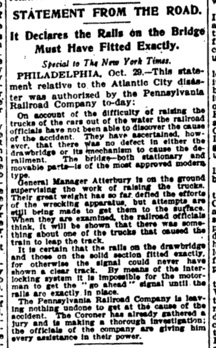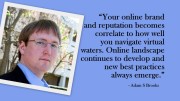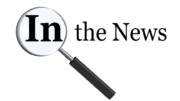In the year 1906, a train accident resulted in loss of 50 deaths but what was born of it is something that’s the very basis of Public Relations – a Press Release. When Ivy Lee would have drafted the first ever Press Release I doubt if he would have imagined what a phenomena he’s creating. Since then the humble piece of content has come a long way. We revisit the lessons from Ivy’s release and discuss the future course.

World’s first Press Release by Ivy Lee as published in the New York Times.
Lessons from World’s First Press Release
- Press Release can disseminate standard information in short span of time to large audience.
- It act as an opportunity to make a statement or responding to a situation or statement. By way of it, you don’t let others define you but do it per your vision and perspective.
- Press Release guarantees absolutely unvarying information about a product, view, event, date, time, etc shared uniformly with the masses.

Ivy Lee – the writer of world’s first press release
On 28th October 1906, when Ivy Lee was drafting a press release that later became world’s first he had no set format and structure to follow. All he did was based on his experience as an ex- journalist and probably that’s the reason why he made no mistakes and impressed media.
110 years down the line if you want to know how to write a press release, I guess you will end up all the more baffled. When I asked google the same question, in 0.52 seconds I got more than nine Crore answers. Don’t think I would be able to go through all of them in my tiny human life span. But what it proves is that Press Release has certainly come a long way since that train accident in 1906.

After 110 years of its existence, I tried to dissect Ivy’s press release and find out the structure that he invented. Amazingly, it’s so very relevant even after more than a century. Don’t believe me? Read on.
- Headline
That’s the anchor. You need to grab the journalist’s attention with just one line. If it isn’t that sticky, chances are that your mail will never be opened even, leave aside the question of its publishing. Peg within the content too plays an important role but it may go waste if the mail remains unopened. And to ensure it is opened and read – give the subject line your best shot. It’s like half the battle won.
- Dateline
That’s not just for media’s reference it may act as a tool to make or break communicator-media relationship. A consistent dateline and if to be altered, better the receiver is apprised of it. By way of putting a future date, one can even request for a news embargo.
- 5W Introduction
The basic questions of who, what, why, when and where must be addressed in the first paragraph itself. That serves the purpose in terms of conveying the essence of the message. If it’s relevant and useful for the person receiving the release he or she would go ahead with the later part or may forward it to the concerned person. The easy you make it for media, better the relationship you have.
- Quote
Adding a quote or two enhances the effectiveness of the messaging and adds gravity to the communication. The quote should be from the highest of the authorities within the organisation being represented and should be relevant to the subject of the communication. Broader vision quotes about the philosophy and mission of the organisation and not addressing the subject are a strict no. Full name and designations of the people being quoted must be included and highlighted.
Two quotes are ideal and placement of the first quote right under the introductory paragraph is recommended.
- Body: Don’t be pushy and soaked in self aggrandizement
Let the data and information shared within the body speak for itself. Highlighting the figures and their importance by way of comparison with the competition or past reference is fine. All you need to remember is that you are writing a release and not an ad copy. Be natural and share the message as simply as it can be.
In several countries the symbol ‘-30-‘ or ‘ends’ appears after the boilerplate and before the contact information. It’s the indication that the release has ended. Nowadays ‘###” is also being used to indicate the end of the release.
- Boiler Plate
Never miss on a short and simple but well versed and information packed paragraph about the company. It’s the background of the company that the journalist should be aware of and also convey the coordinates of the people who could be contacted by them for a follow-up or clarification.










Be the first to comment on "Born of a Train Accident: Journey of Press Release"